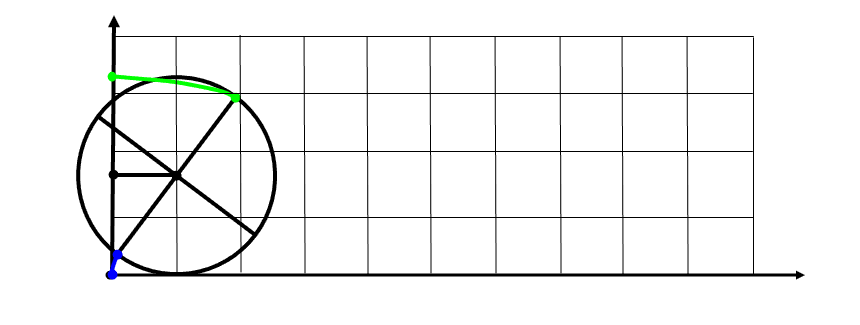INTRODUCTION
The basic vehicles for auxiliary materials and people on horizontal recoil developments of collieries are locomotives. They transport 94 % of all turnovers of goods. On mines the greatest distribution was received with storage and contact electric locomotives of a direct current. One of ways of development of locomotive transport is creation of the locomotive with the raised tractive-brake characteristics. The increase in traction effort of locomotives makes possible application of the locomotive houlage on heavy structures of a way with the raised corners of an inclination. The present work is also devoted to this question.
URGENCY OF THE THEME
In conditions of mine on a railway mudfilms are formed which essentially reduce factor of coupling of a wheel with a rail which it leads to decrease in traction and brake characteristics of locomotives. Therefore transfer of traction and brake effort decreases it in some times, causes reshipping that leads to decrease in speed of the locomotive and even to its full stop. At application of sand there is a raised deterioration of bandages brake and rails. Losses of energy rouse, anol safety decreases.
Thus, efficiency of application of locomotive transport on collieries as a whole sharply falls. Due to the decision of this question it is possible to increase transferred force of draft of the locomotive that it will lead to increase in weight of structure. By increase in coupling it is possible to achieve expansion of a scope locomotive houlage for the raised biases.
THE PURPOSES AND PROBLEMS
For achievement of the given purpose the following primary goals are put:
- To analyse existing ways of increase of tractive-brake characteristics of locomotives;
- To investigate frictional interaction of drive wheels of the locomotive and a rail;
- To develop a design of a wheel with induction coupling;
- To calculate traction effort to a hook which can create an electric locomotive due to coupling wheels with rails by means of induction frictional interaction;
Let's consider in brief the mechanism of transfer of traction effort to axes. We shall admit that the wheel pair (fig. 1) is connected with the engine by means of a tooth gearing. Thus the small cogwheel in diameter D1 () is mit on a shaft of the engine also perceives rotating moment Ì1 developed by it (Í*ì). The big cogwheel in diameter D2 is fixed on an axis of wheel pair and linked with small. Owing to presence of moment Ì1 the small cogwheel creates touchiny pressure on teeth big, equal on size


Fig. 1. The scheme of action of the forces enclosed to wheel pair
Putting to an axis of wheel pair, in its center, two mutually opposite and equal Ò forces Ò ', we receive pair forces Ò and Ò ', enclosed to wheel pair and aspiring to force it to rotate With moment M2=T*D/2 And force Ò ", pressing wheel pair to rails. Substituting value Ò from the equation (1), we receive Ì2 = i*M1 (2) Where i - the transfer attitude, i = D2/D1 Thus, we see that the rotating moment owing to which rotation on can occur is enclosed to wheel pair.
Actually owing to some pressing of wheel pair rails between a wheel and a rail there is a coupling interfering sliding of a wheel on a rail. We will the external forces acting on wheel pair. The part of weight of electric locomotive G0, falling the given axis is transferred it the wheels.
To this force it would be necessary to add or force Ò '. However if we shall take wheel pair together with the traction engine and its suspension bracket to a frame of an electric locomotive we shall see, that action of the rotating moment causes counterbalancing force Ò ' reactions to axes and in a point of hangny of the engine. Thus, only the weight of electric locomotive G0 will press wheel pair to rails and will bee counterbalanced by vertical reaction of rails R=G0. That the wheel slid on a rail without sliding. As some rotating moment is enclosed to a wheel pair and wheels aspire to rotate, a condition for swinging of the wheels on a rail should be presence of some force keeping its at the lowest point in a motionless condition. Such force is the horizontal force of friction Z resulting from pressing of wheels on rails. Force Z, being external in relation to a train, can provide swinginy of the wheel pair on rails and, hence, forward moving of a train.
